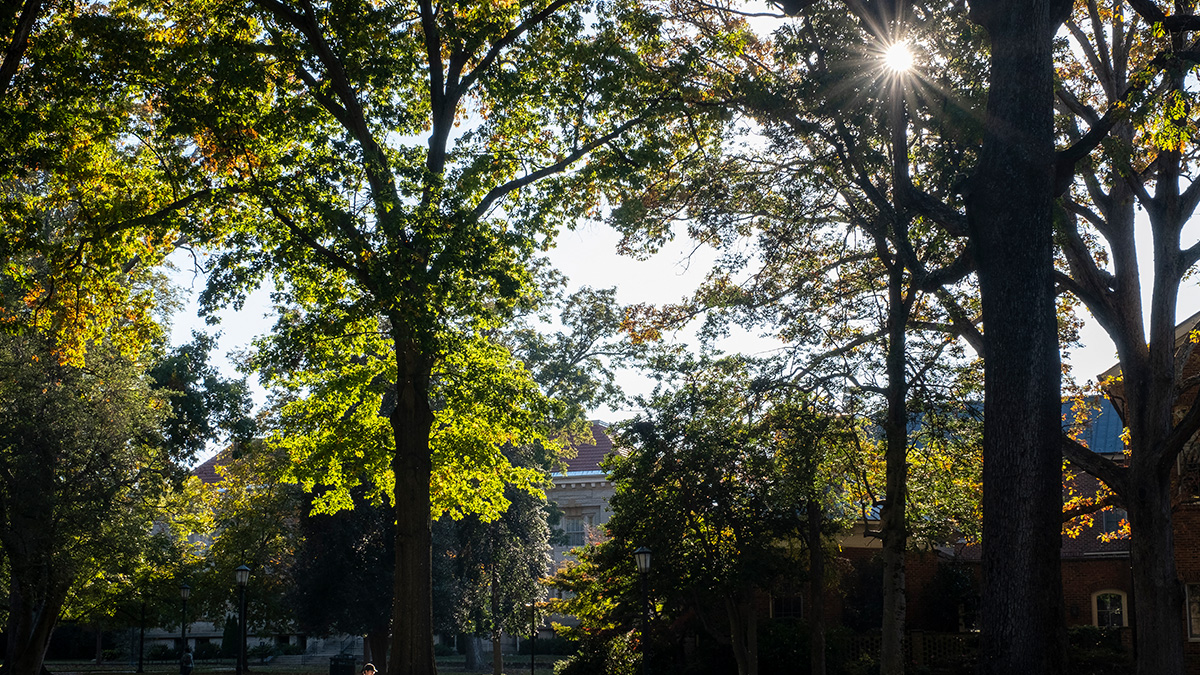Strategic, bold and student-focused
The College of Arts & Sciences is focused firmly on the future and imagining bigger and bolder things.
The College of Arts & Sciences is the oldest and largest school at the University of North Carolina at Chapel Hill. We date our beginning to 1795, when the first students enrolled, just two years after the laying of the cornerstone at Old East.
From the very beginning, the College’s mission was to provide our students with a liberal arts education that was both broad and deep. That certainly has not changed in our two-and-a-quarter centuries of existence, and neither has our commitment to what I call being “passionately public.” Our students, faculty and staff have always been determined to make the world a better place.
As rich as the College’s history is, we are continuing to grow and evolve. Perhaps its most important role has been to equip us to imagine bigger and bolder things. While we embrace our history and traditions, we are focused firmly on the future.
Take, for example, our General Education curriculum. This is the core curriculum that every undergraduate student takes regardless of their major. We are currently reimagining this curriculum — its first major overhaul in more than a dozen years.
We’re not just changing it for change’s sake. We are asking ourselves: What skills and capacities do today’s graduates need to prepare them for careers over the next 30 to 40 years? To inform this revision, we are using evidence-based research that shows how students learn best. Carolina is, after all, a pioneer and leader in “high-structure active learning” concepts; other universities are coming to us to learn these innovative teaching strategies.
We are making education more experiential — through activities like internships, hands-on lab research or service learning — because applying knowledge is one of the most effective ways to reinforce what you’ve learned, and you gain practical skills to boot. We’re also emphasizing the importance of a global education. That includes study abroad opportunities, but it also includes being taught by faculty with global expertise and exposure to global activities here on campus.
We are also making our teaching and research more interdisciplinary. I’ll share three revolutionary programs in the College of Arts & Sciences that represent our major academic divisions (fine arts and humanities; natural sciences; social sciences and global programs) and how all are helping us remove the academic silos that constrain truly collaborative efforts. Working across disciplines and forging sometimes unconventional partnerships to encourage fresh thinking is a tenet of the College’s “Synergy Unleashed” mantra.
- Our Philosophy, Politics and Economics Program is teaching students to see how these three traditional disciplines intersect and relate to one another. It provides a more nuanced lens than you would get studying only one of these subjects.
- Our new Environment, Ecology and Energy Program (E3P) is leveraging the College’s strengths in natural sciences, social sciences and humanities to teach students how to best manage resources in a fast-changing world.
- Our Shuford Program in Entrepreneurship stands out nationally because it is teaching an entrepreneurial mindset to students from any major — music and art, physics, anthropology, sociology and many other disciplines. Entrepreneurial thinking and problem-solving are a natural fit for the liberal arts.
Innovation is happening in the College’s many research enterprises, too.
We are a research powerhouse, with our faculty bringing in $113 million in research grants last year, and we continue to strengthen our basic and applied science portfolios. I predict that our planned Institute for Convergent Science will train and empower generations of interdisciplinary “team scientists” in this new approach that will allow us to fast-track concepts from idea to prototype to marketplace. Only through broad interdisciplinary approaches can you tackle the world’s grand challenges.
Beyond the sciences, our faculty in the arts, humanities and qualitative social sciences are conducting important scholarly work on complex problems ranging from religious intolerance to economic disparity to cultural miscommunication.
When I became dean in January 2016, I said I wanted the College to be “strategic, bold and student-focused.” This is a charge that all of us take up every day. No matter what the future holds, I am confident that we will continue to build on the excellence and distinguishing characteristics that allow us to carry out our mission: Think. Communicate. Collaborate. Create … for meaningful lives.




